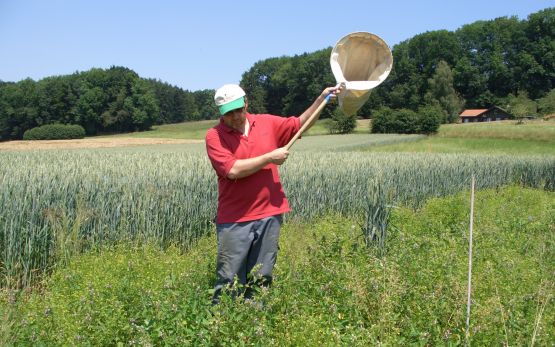Despite fulfilling important functions for the environment, many wildflowers have become rare on Swiss arable land. That’s why Agroscope is investigating how wildflowers can best be employed and used.
Wildflowers contribute to biodiversity, offer food and shelter for beneficial insects and flower pollinators, protect against soil erosion and beautify the landscape. What’s particularly worthwhile for agriculture is the fact that wildflowers also attract so-called beneficial insects. Beneficial insects such as hoverflies or ladybirds feed on pests (e.g. aphids), thereby potentially permitting a reduction in pesticide use. Despite this, many wildflower species have disappeared from Swiss arable land owing to improvements in seed cleaning and the use of more fertilisers, new higher-yielding varieties and chemical weed-control products. Agroscope is therefore investigating how rare wildflowers can be cultivated and looked after. To this end, our researchers are testing different management methods for sown species-rich field margins and making management recommendations available, as well as deriving recommendations for preserving and promoting crop companion plants and testing beneficial-insect-promoting wildflower mixtures for improving natural pest control in arable farming. The results show how wildflowers are of importance for the natural reduction of pests.







